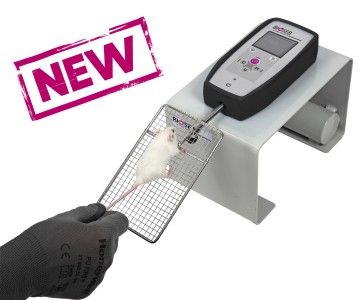Authors
Arbogast T, Raveau M, Chevalier C, Nalesso V, Dembele D, Jacobs H, Wendling O2, Roux M, Duchon A, Herault Y
Lab
Institut de Génétique et de Biologie Moléculaire et Cellulaire, Department of Translational Medicine and Neurogenetics, Illkirch, France
Journal
Dis Model Mech.
Abstract
Partial monosomy 21 (PM21) is a rare chromosomal abnormality that is characterized by the loss of a variable segment along human chromosome 21 (Hsa21). The clinical phenotypes of this loss are heterogeneous and range from mild alterations to lethal consequences, depending on the affected region of Hsa21. The most common features include intellectual disabilities, craniofacial dysmorphology, short stature, and muscular and cardiac defects. As a complement to human genetic approaches, our team has developed new monosomic mouse models that carry deletions on Hsa21 syntenic regions in order to identify the dosage-sensitive genes that are responsible for the symptoms. We focus here on the Ms5Yah mouse model, in which a 7.7-Mb region has been deleted from the App to Runx1 genes. Ms5Yah mice display high postnatal lethality, with a few surviving individuals showing growth retardation, motor coordination deficits, and spatial learning and memory impairments. Further studies confirmed a gene dosage effect in the Ms5Yah hippocampus, and pinpointed disruptions of pathways related to cell adhesion (involving App, Cntnap5b, Lgals3bp, Mag, Mcam, Npnt, Pcdhb2, Pcdhb3, Pcdhb4, Pcdhb6, Pcdhb7, Pcdhb8, Pcdhb16 and Vwf). Our PM21 mouse model is the first to display morphological abnormalities and behavioural phenotypes similar to those found in affected humans, and it therefore demonstrates the major contribution that the App-Runx1 region has in the pathophysiology of PM21.
BIOSEB Instruments Used
Grip strength test (BIO-GS3)
Source :

 Pain - Thermal Allodynia / Hyperalgesia
Pain - Thermal Allodynia / Hyperalgesia Pain - Spontaneous Pain - Postural Deficit
Pain - Spontaneous Pain - Postural Deficit Pain - Mechanical Allodynia / Hyperalgesia
Pain - Mechanical Allodynia / Hyperalgesia Learning/Memory - Attention - Addiction
Learning/Memory - Attention - Addiction Physiology & Respiratory Research
Physiology & Respiratory Research











![Dynamic Weight Bearing 2.0 – Postural Module [Add-on]](https://bioseb.com/733-home_default/dynamic-weight-bearing-20-add-on-postural-module.jpg)
























 Pain
Pain Central Nervous System (CNS)
Central Nervous System (CNS) Neurodegeneration
Neurodegeneration Sensory system
Sensory system Motor control
Motor control Mood Disorders
Mood Disorders Other disorders
Other disorders Muscular system
Muscular system Joints
Joints Metabolism
Metabolism Cross-disciplinary subjects
Cross-disciplinary subjects CONFERENCES & MEETINGS
CONFERENCES & MEETINGS 